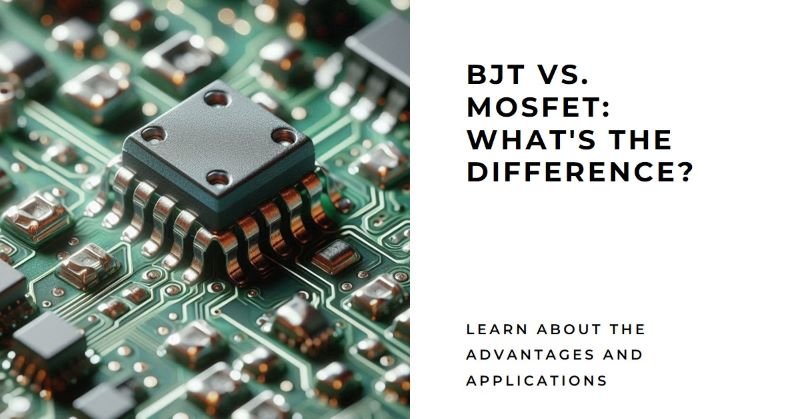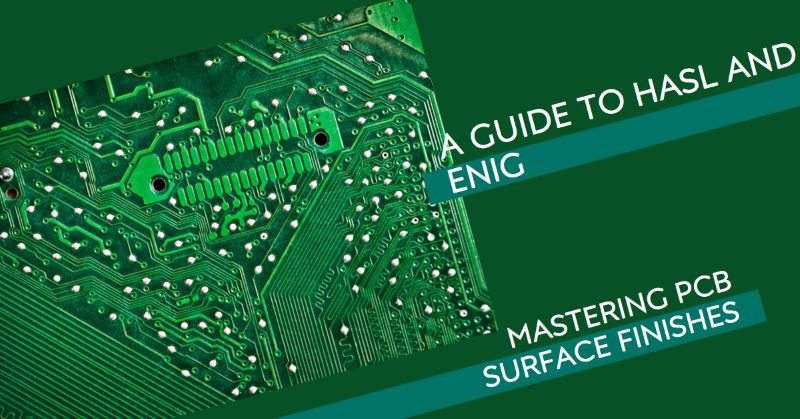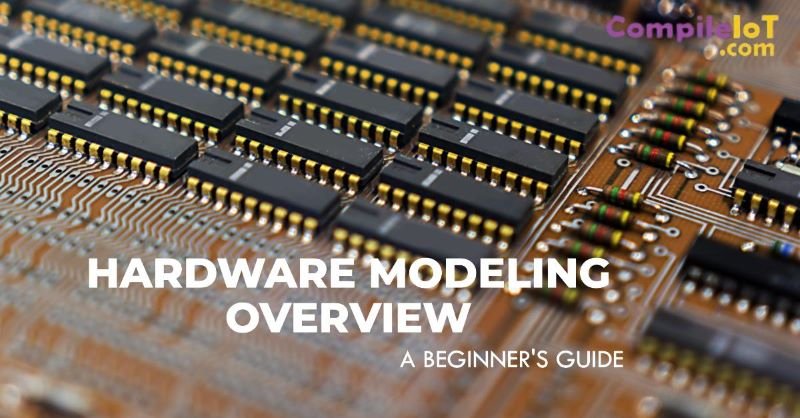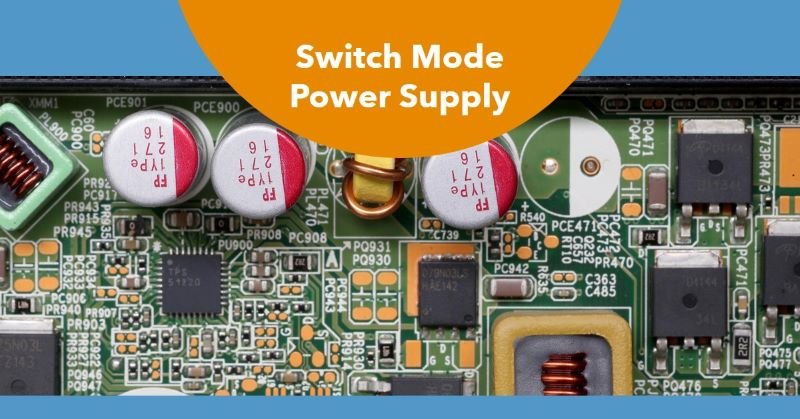BJT vs. MOSFET: Key Difference, Advantages and Applications
Transistors are the fundamental building blocks of modern electronics, serving as amplifiers and switches in a wide variety of applications. Since their invention, transistors have revolutionized technology, enabling the development of compact and efficient devices such as computers, smartphones, and power systems. These semiconductor devices control the flow of electrical current, making them indispensable in both analog and digital circuits.
Two of the most common types of transistors are the Bipolar Junction Transistor (BJT) and the Metal-Oxide-Semiconductor Field-Effect Transistor (MOSFET). BJTs are current-controlled devices used for signal amplification, while MOSFETs are voltage-controlled devices primarily used for switching applications. Both types of transistors have their unique strengths and weaknesses, making them suitable for specific functions in electronics.
Understanding the differences between BJTs and MOSFETs is crucial for choosing the right type of transistor for a particular application. While BJTs are known for their robust current amplification properties, MOSFETs excel in power efficiency and high-speed switching. Comparing these transistors helps clarify their roles in electronics and aids engineers in designing more efficient and reliable systems.
Overview of BJT
Working Principle
The BJT operates by using a small current at its base terminal to control a larger current flowing between its collector and emitter terminals. This current control is key to the BJT’s amplification properties. In an NPN-type BJT, for example, when a small current enters the base, it allows a larger current to flow from the collector to the emitter, amplifying the input signal. The BJT has three regions of operation—cutoff, active, and saturation—depending on the input signal applied at the base.
Construction

BJTs are made up of three layers of semiconductor material. In the NPN type, a thin P-type layer (the base) is sandwiched between two N-type layers (the emitter and the collector). In the PNP type, a thin N-type layer is placed between two P-type layers. The emitter injects carriers (electrons or holes) into the base, where they are partially controlled and then collected by the collector.
Characteristics
Key characteristics of BJTs include their ability to amplify current, good linearity, and relatively low input impedance. They are ideal for analog applications such as amplifiers, where a stable current gain is required. BJTs are also known for their operation in the saturation region, where they can function as switches, although they are not as power-efficient as MOSFETs in this mode.
Overview of MOSFET
Working Principle
A MOSFET operates by using an electric field created by a voltage at its gate terminal to control the current between the drain and source terminals. Unlike BJTs, which are current-controlled devices, MOSFETs are voltage-controlled. When a voltage is applied to the gate, it alters the electric field within the transistor, allowing current to flow between the drain and source. MOSFETs have high input impedance, which means they require very little input current to operate.
Construction
MOSFETs consist of three main regions: the gate, source, and drain. The gate is insulated from the channel (through which current flows) by a thin oxide layer. MOSFETs come in two types: Enhancement mode and Depletion mode. In Enhancement mode, the MOSFET is normally off, and a voltage must be applied to turn it on. In Depletion mode, the MOSFET is normally on, and applying a voltage can turn it off or reduce the current flow.
Characteristics
MOSFETs are known for their high input impedance, low power consumption, and fast switching speed. These properties make them ideal for digital circuits, power electronics, and high-frequency applications. MOSFETs are particularly efficient in switching circuits, where their ability to operate with minimal power loss makes them superior to BJTs in many modern electronic systems.
Key Differences Between BJT and MOSFET
Control Mechanism: Current Control (BJT) vs. Voltage Control (MOSFET)
The primary difference between BJTs and MOSFETs lies in how they are controlled. BJTs are current-controlled devices, meaning a small base current is required to control a larger collector-emitter current. In contrast, MOSFETs are voltage-controlled, where the gate-source voltage determines the current flow between the drain and source. This fundamental difference affects their efficiency and makes MOSFETs more suitable for applications where low power control is essential.
Power Consumption: Power Dissipation and Efficiency
BJTs generally consume more power because they require continuous base current for operation. This results in higher power dissipation, especially in switching applications. MOSFETs, on the other hand, have much lower power consumption as they require almost no current to control the gate. This makes MOSFETs more efficient, especially in power-sensitive circuits and high-efficiency switching applications.
Switching Speed: Comparison of Speed in Switching Applications
MOSFETs excel in high-speed switching due to their low input capacitance and minimal control current. This makes them ideal for fast-switching circuits, such as in power supplies and digital electronics. BJTs, while effective in slower switching applications, suffer from slower transition times between on and off states, which limits their use in high-speed operations.
Input Impedance: High for MOSFET vs. Lower for BJT
MOSFETs have extremely high input impedance, often in the range of megaohms or higher, meaning they require very little input current to operate. This makes them ideal for use in applications where a minimal control signal is required. BJTs, on the other hand, have a much lower input impedance, which means they draw more current from the input source, affecting overall efficiency.
Thermal Stability: Handling Heat and Temperature Variations
BJTs are more prone to thermal runaway, a condition where increased temperature causes more current to flow, further heating the transistor. This makes them less thermally stable compared to MOSFETs, which are generally more resistant to temperature variations. MOSFETs tend to have better thermal management due to their negative temperature coefficient, meaning they naturally limit current as temperature increases, providing better stability under high temperatures.
Application in Linear vs. Switching Circuits
BJTs are commonly used in linear circuits, such as amplifiers, due to their ability to provide stable current gain and good linearity. However, their switching performance is less efficient. MOSFETs, on the other hand, excel in switching circuits due to their fast switching speeds, low power consumption, and efficiency. As a result, MOSFETs are preferred in high-frequency switching applications like power supplies and motor control.
Advantages and Disadvantages
BJT Advantages and Disadvantages
Advantages:
- BJTs are generally cheaper than MOSFETs, making them cost-effective in low-power and analog applications.
- They offer good current amplification, making them suitable for audio amplifiers and other analog circuits.
- BJTs are relatively simple to use in low-frequency switching circuits.
Disadvantages:
- Higher power consumption due to the need for continuous base current.
- Slower switching speed compared to MOSFETs.
- Lower thermal stability, making them less suitable for high-temperature applications.
MOSFET Advantages and Disadvantages
Advantages:
- MOSFETs offer fast switching speeds, making them ideal for high-frequency applications.
- They are highly efficient with low power consumption, especially in switching circuits.
- Better thermal stability due to their negative temperature coefficient.
Disadvantages:
- MOSFETs are generally more expensive than BJTs, particularly for high-power versions.
- They can be more sensitive to voltage spikes, requiring additional protection circuitry.
- Complex driving circuits may be needed to control the gate in some applications.
Applications
BJT Applications
- Amplifiers: BJTs are widely used in low-power audio amplifiers and analog circuits where linearity and stable current gain are required.
- Analog Circuits: BJTs are preferred in analog signal processing due to their good linearity.
- Low-Speed Switching: Though less efficient than MOSFETs, BJTs are used in low-speed switching applications, such as relays and motor controllers.
MOSFET Applications
- Power Electronics: MOSFETs are widely used in power supplies, inverters, and other power control systems due to their high efficiency and fast switching.
- Digital Circuits: MOSFETs are the foundation of digital circuits and microprocessors, particularly in CMOS technology.
- High-Speed Switching: MOSFETs are ideal for high-speed switching applications, such as in pulse-width modulation (PWM) circuits, motor drives, and RF amplifiers.
Conclusion
In summary, Both BJTs and MOSFETs play critical roles in modern electronics, but their differences make them suitable for distinct applications. BJTs are favored in analog circuits and applications requiring current amplification, while MOSFETs excel in high-speed switching and power-sensitive designs. The choice between the two depends on factors such as efficiency, speed, power handling, and cost. As technology continues to evolve, understanding the differences between BJTs and MOSFETs remains crucial for designing efficient and reliable electronic systems.








